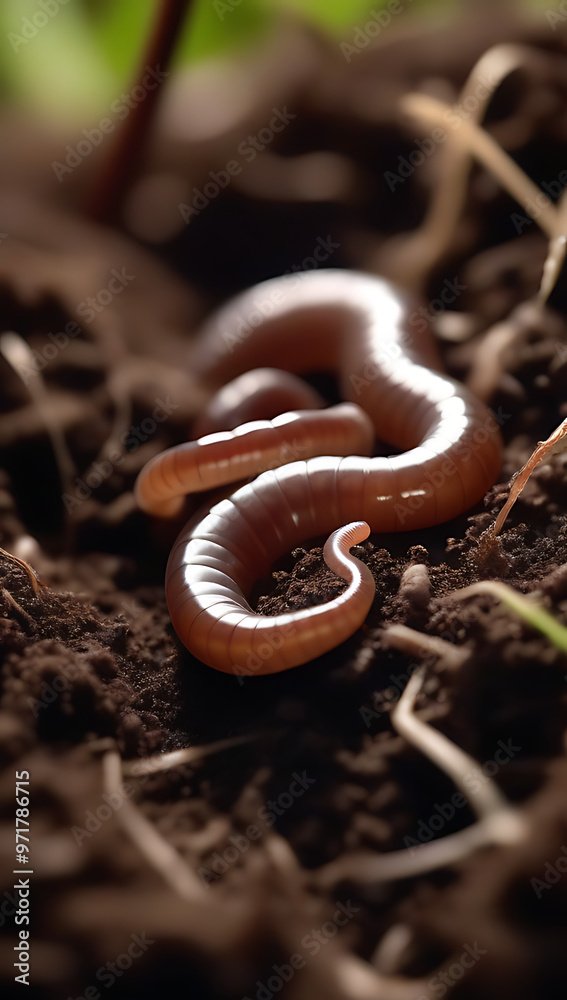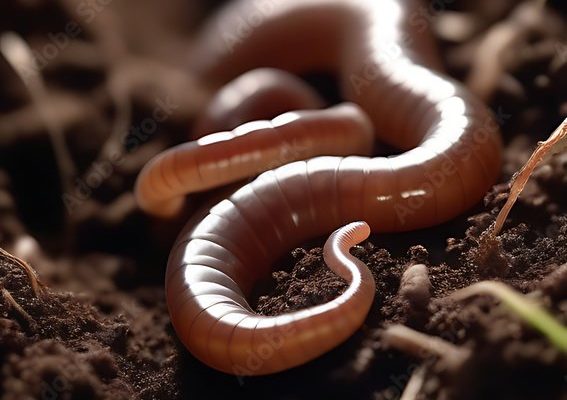
Having a healthy population of earthworms in your soil is definitely a good sign, but what exactly should you look for? How can you tell if earthworms are happy and thriving in your garden or yard? Let me explain the signs of healthy earthworm populations, so you can ensure your soil stays rich and ready for planting!
Understanding Earthworm’s Role in Soil Health
Before we dive into the signs of a healthy earthworm population, let’s touch on their role in soil health. Earthworms are crucial for soil aeration, which means they make little tunnels in the ground while they wiggle around. This helps air, water, and nutrients move through the soil more freely. Think of them as tiny excavators, ensuring that everything is getting the circulation it needs.
As they consume dead leaves and other organic materials, earthworms break these down into a nutrient-rich substance known as castings. These castings are like the secret fertilizer of the soil world, providing essential nutrients for plants. So, when there are plenty of earthworms around, it often means your soil is in great shape.
Let’s get into the signs you should look for to see if your soil has healthy earthworm populations!
1. The Presence of Earthworms
The simplest way to know if your soil is happy with earthworms is to actually find them! Healthy soil often has a good number of earthworms squirming about. If you dig down a bit and see a few of these slimy fellows, congratulations!
But how many is considered “healthy”? A thriving population can be anywhere from 10 to 50 earthworms per square meter of soil. If you’re not seeing any at all, that could be a red flag. Factors like soil compaction, lack of organic matter, or even chemical usage can negatively impact their population.
Think of it like this: if you’re not spotting any earthworms, it’s a little like not seeing birds in a thriving forest. Their absence often indicates something’s off, but their presence is a reassuring sign that your soil is doing well.
2. Healthy Soil Structure
Another positive sign of a robust earthworm population is the soil structure itself. Healthy soil should feel crumbly and loose, with a good balance of bits and pieces to allow air and moisture to penetrate.
Earthworms help create this structure as they burrow and consume organic matter. Their movement makes tiny spaces in the soil, which promotes better drainage and root growth for plants. If you notice that your soil doesn’t clump together tightly but instead crumbles easily, that’s a good indication that you have some happy earthworm residents working their magic.
If things feel heavy and compacted, it might be time to consider how you can enrich your soil. Adding organic materials like compost or mulch can encourage more earthworms to settle in and do their jobs!
3. Nutrient-Rich Castings
As I mentioned before, earthworm castings are like gold for your soil. If you’ve ever come across dark, crumbly soil filled with little beads or pellets, you might be looking at earthworm castings. This material is packed with nutrients and is a great indicator of a thriving worm population.
You might even notice that this nutrient-rich matter has a pleasant earthy smell. In contrast, poor soil often has a sour or musty odor, indicating a lack of microbial life and fertility.
If you want to encourage more earthworms and their beneficial castings, consider adding mulch, compost, or leaf litter to your garden. These materials are like a buffet for earthworms, making your garden a more inviting place for them to flourish.
4. Healthy Plant Growth
When earthworms are busy doing their thing, you’ll see the results reflected in your plant growth. Plants will thrive in soil that’s been enriched by earthworm activity, leading to greener leaves, more flowers, and bigger fruits or vegetables.
If your plants are growing strong, that’s a good sign that your earthworm population is contributing positively. However, if you’re noticing stunted growth, yellowing leaves, or weak stems, it might mean that the earthworm population isn’t flourishing as it should be.
Keep an eye on your plants; they often tell the story of your soil. Just like a healthy diet contributes to your well-being, a healthy worm population is crucial for robust plant life.
5. Soil Temperature Regulation
Healthy earthworm populations also help regulate soil temperature. Their burrowing activity allows air to circulate, which can prevent overheating in the summer or excessive cooling in the winter.
If you dig into the soil and notice it feels comfortable and well-balanced, that’s a good sign that earthworms are contributing to this regulation. On the flip side, if the soil feels overly hot or cold, it might indicate a lack of earthworm activity, which could affect the overall health of your plants.
In a way, you can think of earthworms like little thermostats for your garden, helping to maintain the ideal growing conditions for your plants.
6. Increased Microbial Activity
Earthworms don’t work alone; they collaborate with beneficial microbes in the soil. These microbes are essential for breaking down organic matter and making nutrients available for your plants.
If you’re noticing a lot of earthworm activity, it usually goes hand-in-hand with increased microbial life. You might see tiny fungi or beneficial bacteria that are crucial for soil health. This teaming up of worms and microbes creates a thriving ecosystem that benefits everything in your garden.
On the contrary, if you find your soil lacks microbial activity, it could indicate that earthworm populations are low. This absence could mean fewer nutrients are being produced, leading to a less vibrant garden.
7. Soil pH Balance
Lastly, a healthy earthworm population often contributes to a balanced soil pH. Earthworms help in decomposing organic matter, which makes nutrients more available for plants. A balanced pH level is crucial for plants to absorb these nutrients effectively.
If your soil pH is off, it can disrupt plant growth, leading to nutrient deficiencies. You can test your soil’s pH using kits available at gardening stores. If you find it’s balanced—usually around 6.0 to 7.0 for most plants—that’s another indicator that earthworms are doing their job well.
Conversely, if the pH is too high or too low, it might signal that earthworm populations need some help, perhaps due to soil compaction or a lack of organic matter.
In summary, keeping an eye on your soil and its signs of healthy earthworm populations can lead to a thriving garden. From spotting those squiggly creatures to evaluating the structure and smell of your soil, you can easily assess how well your earthworms are doing.
By nurturing your soil with organic materials, avoiding chemical inputs, and maintaining proper moisture levels, you can encourage earthworms to thrive. Remember, healthy earthworms are not just beneficial for your garden; they’re essential for a sustainable environment overall.
So, the next time you find yourself digging in the dirt, take a moment to appreciate those little earthworms. They’re more than just a curiosity—they’re the unsung heroes of your garden!

